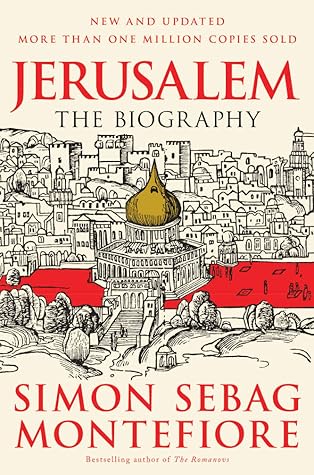More on this book
Community
Kindle Notes & Highlights
At around this time, a child named Joshua ben Joseph, or (in Aramaic) Jesus, was born. His parents were a carpenter, Joseph, and his teenaged betrothed, Mary (Mariamme in Hebrew), based in Nazareth, up in Galilee. They were not much richer than peasants, but it was said they were descended from the old Davidian house. They travelled down to Bethlehem where a child, Jesus, was born “that shall rule my people Israel.” After he had been circumcised on the eighth day, according to St. Luke, “they brought him to Jerusalem, to present him to the Lord” and make the traditional sacrifice in the
...more
As for the child from Nazareth, we do not hear of him again for about thirty years.j
Jesus, realizing that he was in danger, escaped to the desert, but he frequently visited Jerusalem—the only founder of the three Abrahamic religions to have walked her streets.
The city and the Temple were central to his vision of himself.
Jesus left no writings and his teachings have been endlessly analysed, but the four Gospels reveal that the essence of his ministry was his warning of the imminent Apocalypse—Judgement Day and the Kingdom of Heaven.
Respect in Jerusalem was based on family (Temple magnates and Herodian princelings), scholarship (the Pharisee teachers) and the wild card of divine inspiration.
Up to this point, the story of Jesus’ Passion—from the Latin patior, to suffer—is based on our sole source, the Gospels, but no faith is required to believe in the life and death of a Jewish prophet and thaumaturge. However, three days after his crucifixion, on Sunday morning, according to Luke, some of Jesus’ female family and followers (including his mother and Joanna, the wife of Herod Antipas’ steward) visited the tomb: “They found the stone rolled away from the sepulchre and they entered in and found not the body of the Lord Jesus … As they were much perplexed, behold two men stood by
...more
Paul focused on the Resurrection, which he saw as the bridge between humanity and God. Paul’s Jerusalem was the Heavenly Kingdom, not the real Temple; his “Israel” was any follower of Jesus, not the Jewish nation. He was, in some ways, strangely modern, for, contrary to the harsh ethos of the ancient world, he believed in love, equality and inclusiveness: Greeks and Jews, women and men, all were one, all could achieve salvation just by faith in Christ. His letters dominate the New Testament, forming a quarter of its books. His vision was boundless, for he wished to convert all people.
“I fight; therefore I am,” said Menachem Begin, adapting Descartes.
Here, more than anywhere else on earth, we crave, we hope and we search for any drop of the elixir of tolerance, sharing and generosity to act as the antidote to the arsenic of prejudice, exclusivity and possesiveness. It is not always easy to find. Today, Jerusalem has not been so large, so embellished, nor has she been so overwhelmingly Jewish for two millennia. Yet she is also the most populous Palestinian city.f Sometimes her very Jewishness is presented as somehow synthetic and against the grain of Jerusalem, but this is a distortion of the city’s past and present.
When they are not in conflict, Jews, Muslims and Christians return to the ancient Jerusalem tradition of ostrichism—burying their heads in the sand and pretending the Others do not exist.
It is now one hour before dawn on a day in Jerusalem. The Dome of the Rock is open: Muslims are praying. The Wall is always open: the Jews are praying. The Church of the Holy Sepulchre is open: the Christians are praying in several languages. The sun is rising over Jerusalem, its rays making the light Herodian stones of the Wall almost snowy—just as Josephus described it two thousand years ago—and then catching the glorious gold of the Dome of the Rock that glints back at the sun. The divine esplanade where Heaven and Earth meet, where God meets man, is still in a realm beyond human
...more


